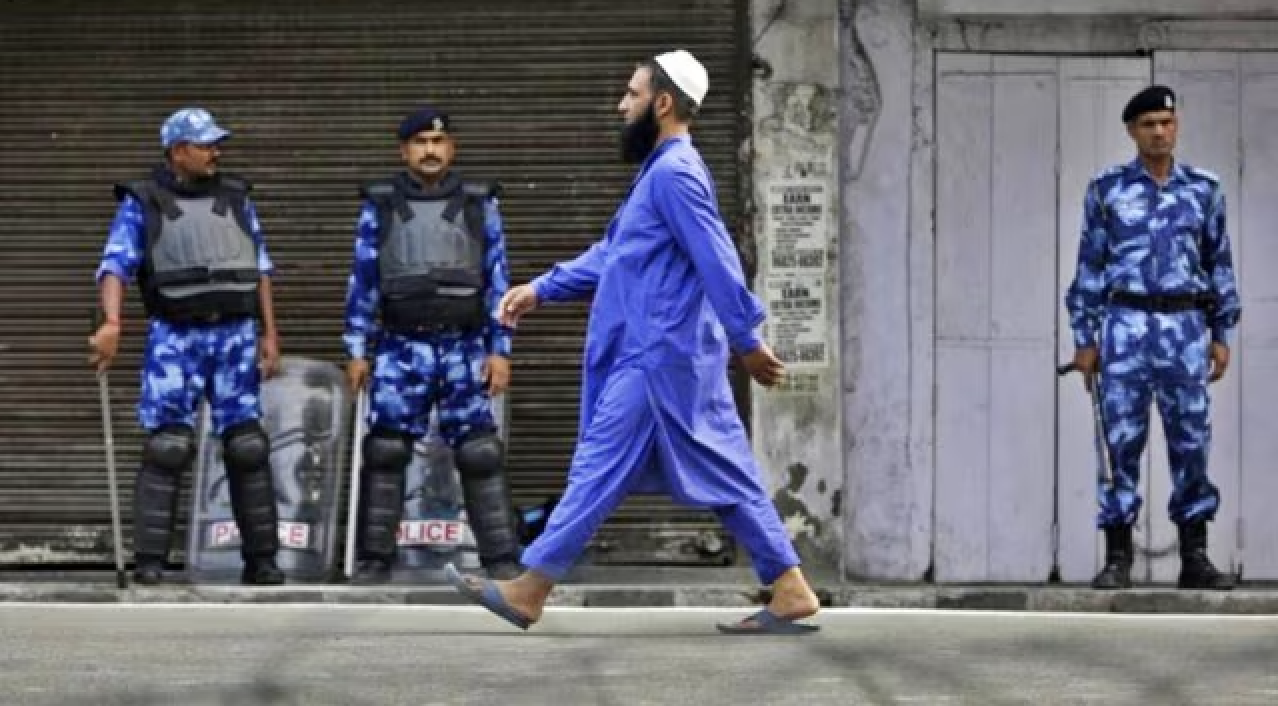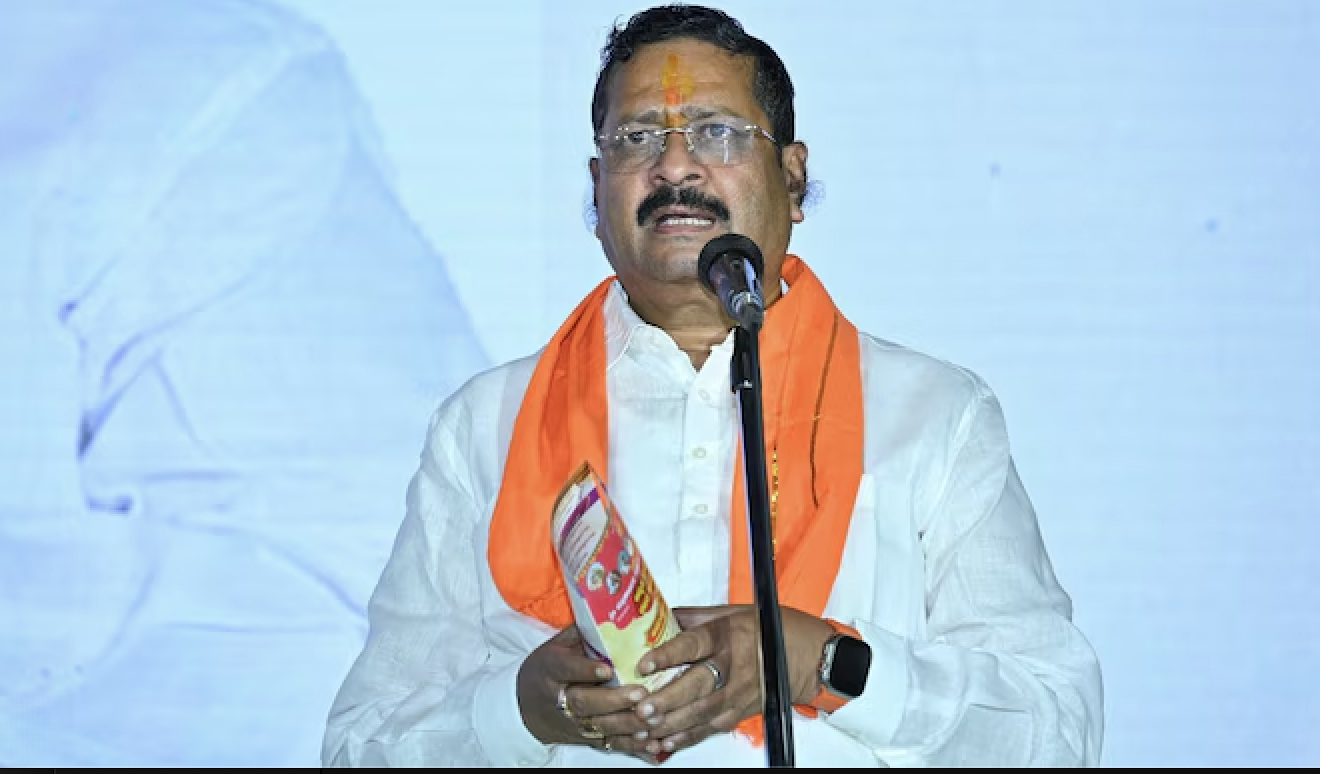
In an intricate analysis of the debates around the Places of Worship (Special Provisions) Act, 1991, ARITRO BOSE and JIBRAAN MANSOOR write about the eruption of lexicology for ‘contestations’ which have come forth in the aftermath of the Supreme Court’s Ayodhya judgment and its implications for the discourse around the Places of Worship Act, and contest the Supreme Court’s opinion on the Act by referring to the Lok Sabha debates from 1991 cited in the judgment.
ON the 17th of May, in the Barabanki district of Uttar Pradesh, a mosque by the name of Gareeb Nawaz al Maroof was demolished by the local administration, in clear contravention of an Allahabad High Court order. In defending the demolition, the administration suggested that the mosque’s supporters “ran away” and “chose not to contest the demolition order.”
Even if we overlook the “waves of arrests” that “scuttled protests” in the months preceding the demolition, we must still ask, as British academic Jacqueline Rose does, what it means to “make resistance a condition of freedom from oppression.”
This onus of contestation as a prerequisite for acknowledgement of a minority’s rights is particularly troubling in the context of Ayodhya. The lexicology of the administration’s comments reflects a farcical display of secularism that seems inevitable in the aftermath of the Supreme Court judgement regarding the Ayodhya dispute, places the burden to resist upon a minority, and then subsequently hounds with fervour anyone who actually does resist. It goes beyond the different standards of proof that the Ayodhya judgement grants to the majority and minority communities’ claim to the Babri Masjid property, and renders invisible an entire history of resistance.
This essay is partly an exploration of the terms of this resistance. It is also a critique of the manner in which secularism is framed by the 2019 Ayodhya Judgement and The Places Of Worship (Special Provisions) Act, 1991 (Places of Worship Act) before it.
Most of all, however, it is an attempt to trace a genealogy of the worst kind of violence inflicted upon Indian Muslims; one in which, in the words of German philosopher Walter Benjamin, “even the dead … [is not] safe”
What does it mean to Contest?
Much has already been said of the Supreme Court’s verdict on Ayodhya. Academics John Sebastian and Faiza Rahman highlight that “different standards applied to the possessory claim” between Hindus and Muslims; whereas Hindus had to showcase an exclusive possession of the outer courtyard, Muslims were required to display “uncontested possession” of the inner courtyard at Babri. Furthermore, journalist Sruthisagar Yamunan argues that possession of the inner courtyard by Muslims after 1857 was completely ignored by the Court.
However, the double standards do not stop with the nature of possessory claims. They extend to the very meaning of ‘contest’.
The apex court’s reading of the history of Babri is fraught with understanding violence as a legitimate contestation while simultaneously erasing Muslim attempts at contesting the outer courtyard. Lawyer and political commentator A.G. Noorani point out how the entirety of litigation by the Hindus in the 19th century relied on a claim to the chabutra, or platform, outside the mosque and not the mosque itself. Yet the Supreme Court reads the history of this litigation as evidence of contestation of the inner courtyard.
In doing so, it understands an attempt by Hindus to halt painting the walls of the mosque as a contest. In the same breath, it also entertains a refusal by the Hindus to pay rent for the outer platform to a certain Md. Asgar in 1882 as the exclusive possession of the outer courtyard by the Hindus. An attempt to collect rent, therefore, does not amount to a contest in the Court’s eyes, while an attempt to halt painting does.
Furthermore, a legal vacuum sets in after 1885 and lasts till 1934, during which period there is no litigation or attempt to ‘contest’ the inner courtyard by the Hindus. How do we read these fifty years of silence alongside the Court’s insistence on a history of serious contestations as damaging to the Muslim claim?
What is far more insidious, however, is the Court’s treatment of the violence of 1934. At one level, in understanding acts of communal violence against Muslims as contestations, the Court, in the words of Sebastian and Rahman, “effectively puts a legal imprimatur upon violence.”
At another level, the Court reads an act of retaliation in a communal riot as a legitimate claim of contestation; for the 1934 riots were “sparked off by the slaughter of a cow” in the nearby village of Shahjanpur.
There are two grave inferences to be drawn from the Court’s position here.
Firstly, the differing standards of what it means to contest is reflective of a continuing tradition of the weaponisation of secularism. Law professor Ratna Kapur, in critiquing the Allahabad High Court’s judgement on Ayodhya from 2010, wrote of Indian secularism as basing itself on “formal equality”, and through it, the “Hindu Right’s vision of secularism” acting as “unmodified majoritarianism” couched in liberal-secular vocabulary. The 2019 judgement goes one step further and is brazenly unequal in its treatment of the two feuding religious sides.
More ominously, in reading an act of communal retaliation and violence as contestation, the Supreme Court sets a dangerous precedent for inviting future violence. Reading this in conjunction with the Court’s decision to admit petitions in March challenging the constitutionality of the Places of Worship Act, which prohibit the conversion of any public place of worship, paves the way for a wave of violence against minority religious institutions.
In a future where the Places of Worship Act no longer protects them, are we to now understand the destruction of mosques in the Delhi pogrom of last year as simply the majority community flagging its claim over those properties, or ‘contesting’ them?
And what happens when there are counter-contestations from the minority? As in the case of Gareeb Nawaz Al Maroof, resistance is met with the full force of the state machinery; threats of serious criminal charges under draconian laws like the National Security Act, 1980 are dished out to those who even raise their voices, let alone their fists.
In light of such asymmetries, will there be a consistent demand on minorities to resist in order to access basic constitutional rights? And will the terms of this resistance continue to be determined through the invisiblisation of minority narratives, as was the case with the very document that is now the last refuge for Indian mosques, the Places of Worship Act itself?
Mic On, Tongues Cut
Benjamin writes, in his well-known essay On the Concept of History, that “[t]here is no document of civilisation that is not at the same time a document of barbarism.” This warning rings true when we explore the history of the Places of Worship Act, a piece of legislation that, on its face, safeguards religious minority institutions from majoritarian violence, but which has a history steeped in silencing dissenting voices and enforcing the terms of a minority’s stand of resistance.
A lot has already been written about the statute. According to some, it needs to be held unconstitutional. Others, following the Supreme Court’s decision in the case of Ismail Faruqui & Ors. vs. Union of India & Ors. (AIR 1995 SC 605), believe that the Act is redundant, since, in the Court’s own words, “those who razed the disputed structure to the ground on 6th December 1992” were clearly not deterred by existing provisions in the Indian Penal Code, and so the deterrence engendered by the Places of Worship Act also remains suspect. Finally, for some, the Act embodies the secular values of the Indian Constitution, as per the Court’s Ayodhya judgment. The Chairman of the Sunni Central Waqf Board, for instance, notes that the Act “must be implemented to stop attacks on mosques in India.”
Regardless of the Act’s use in defending mosques and other minority religious institutions in the country, its defining feature remains the exclusion of Babri Masjid and Ram Janmabhoomi from its ambit. Thus, when the Ayodhya Judgement extols the “intention of parliament” in passing the Act, commenting that it was about “healing the wounds of the past”, it engages in an active erasure of the law’s own violent and repressive genesis.
To showcase this, we need to revisit the Lok Sabha debates of September 10, 1991, when the Act, then a Bill, was deliberated by sitting members of Parliament.
To call it a debate would be a travesty. The concerns raised by Muslim Members of Parliament (MP) such as Ebrahim Suleiman, Mohammad Yunus Saleem, and Salahuddin Owaisi, which all centred on their grievances with the Babri Masjid being excluded from the ambit of the Bill, fell on deaf ears.
Ebrahim flagged the “sinister designs and aggressive intentions” of the “BJP-VHP-RSS axis” as “creating deep apprehensions” and argued that Section 5 of the Bill, which excluded Babri, should be deleted. Parliamentarian P.M.
Then Lakshadweep MP P.M. Sayeed highlighted in the Lok Sabha on September 9, 1991, the fact that the Bill’s very existence was predicated on what happened in Ayodhya. He further warned that the exclusion of Babri would lead to the demolition of other mosques in Varanasi and Mathura.
The response was mono-tonal. “We are not discussing Babri Masjid and Ram Janmabhoomi,” the Speaker of the House told Saleem. Owaisi was instructed by the speaker to “keep Babri Masjid and Ram Janmabhoomi out of it.” There were frequent reminders to the dissident voices that the House was “interested in passing the Bill in time.” Similar reminders of clockwork weren’t issued to the likes of Bharatiya Janta Party MP L.K. Advani and Shiv Sena MP A.A. Deshmukh, who used their speeches to launch polemics against the Muslim community.
In spite of the Ram rath yatra, the bloody riots of 1990 in Bijnor and Hyderabad, and the looming threat of the demolition itself, there was a conscious shying away from according even basic constitutional protections to Babri.
In every sense of the word, then, the genesis of the Places of Worship Act stands as a “document of barbarism.” On July 11, 1991, when the President, in his address, assured of a “negotiated settlement” for Babri “with due regard to the sentiments of both communities involved,” this assurance formed the basis for justifying Babri’s exclusion from the Act.
In September, Sayeed warned that the Vishwa Hindu Parishad had no intent to “construct”, rather all they sought was “demoli[tion].” Indeed, following Babri’s exclusion from the Act, in December of 1992, the demolition did follow.
Also read: Everything you need to know about Babri Masjid demolition and the trial thereafter
Yet in 2019, the Supreme Court was explicit in its praise of the Act. For the Court, it “preserves non-retrogression as an essential feature of our secular values.” It “reflects the commitment of India to the equality of all religions.”
In a cruel twist, the Act indeed stands as a sort of last defence for India’s existing mosques that have for long been on the Hindu Right’s radar. It becomes a “document of civilisation.” What is lost in this transformation is a history of violence, and an abuse of the dignity of an entire community. “The most prevalent, the most insidious forms of violence,” as Rose puts it, “are those that cannot be seen.”
Fissures in History, Erasures of Memory
Where the Ayodhya judgement pronounces the Places of Worship Act as a closure against discontinuities, we must remember, as British-American law professor Peter Goodrich postulates, that “the closure of law at best represents a fiction and at worst a symptom of a confused forgetting or deeply unhappy repression.”
While the irony of an institution that fetishizes memory and precedent itself forgetting must not be lost, the Ayodhya Judgement requires us to go a step beyond Goodrich; rather than the feminine position of “displacement and recovery”, of forgetting; the judgement stands testament to masculine erasures which are often judicially encrypted.
In deposing such encryptions, law professor Amit Bindal points out that the judgement devotes “nine full pages to a legislation that in explicit terms excludes the present controversy, while giving only half a page, bereft of any context” to the Supreme Court’s landmark judgment S.R. Bommai v. Union of India (AIR 1994 SC 1918)— in which a nine-judge Constitutional bench recognised the “serious blow to the communal harmony and peace in the country” caused by Babri’s demolition.
According to Bindal, in rendering Bommai as a “decorative precedent”, the judgement reveals its “positive unconscious”. Goodrich puts it as “the language of the law” carrying in it “all that is unsaid … its failures within, as an indelible past, as a memory of battle.”
It is our task, therefore, to preserve attempts at obfuscating these memories. “The tradition of the oppressed,” as Benjamin says, “teaches us that the ‘state of emergency’ in which we live is not the exception but the rule.” It is within this tradition that one must place the Places of Worship Act, and with it a history that erases those incidents that do not conform to the ruling class’s definition of resistance.
Benjamin is particularly prescient in informing us that the struggle to preserve memories of oppression is one that we must engage in against the tide of history: “[E]very image of the past that is not recognised by the present as one of its own concerns threatens to disappear irretrievably.”
History, in the form of the Supreme Court harkening back to the Lok Sabha debates from the 10th of September, 1991, seeks to preserve the statements by a majority of the members that day regarding the “intent of Parliament” and the secular nature of the Act. What is lost are the words of warning, of fear, and inevitably, of hope, that were spoken that day as well in an attempt to prevent the coming of independent India’s worst communal clash.
Our purpose in this essay has been to preserve certain images from disappearing; the Lok Sabha debates that stand testament to a forgotten resistance, the many acts of contestation by minorities that the Courts didn’t see as such, and the majority’s violent retribution that amounted to legitimate claims of ownership. In highlighting a forgotten history, we hope to provoke the question of preserving what’s left while also acknowledging what was lost. The quest for survival of Gyanvapi Mosque, or the Masjid Shahi Eidgah — under threat from a majority that seeks to overcode one act of barbarism with another — is dependent upon this remembrance.
Saleem’s remarks from that fateful day in 1991, when cautioned by the Lok Sabha Speaker on bringing up Babri Masjid, stand out to us. “I do not want to quarrel with you,” he says. In a country that persecutes acts of resistance and subsequently calls upon its oppressed minorities to resist in order to have any access to rights, he might as well have said, “I do not want to exist.”
This story was first appeared on theleaflet.in






